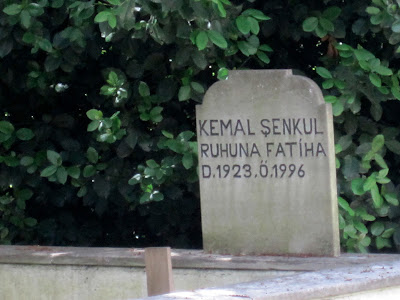is a curious body of water.
It holds an allure for Julie as one of her all-time favourite restaurants serves dishes from the Black Sea and she loves the Wednesday market of Black Sea traders in garden produce.
It also is the end of a line of two distinct water flows: fresh water from rivers in eastern Europe, Central Asia and Turkey; salt water from the Mediterranean via the Turkish Straits, composed of the Dardanelles between the Aegean Sea and the Sea of Marmara, and the Bosphorus, between the Sea of Marmar and the Black Sea.
All very complicated, with layering of waters based on temperature, salinity and surface/coastal conditions. But I imagine this complication is what gives this region its richness and diversity of agriculture and fisheries.
I finally succumbed to the lure of the Bosphorus cruise (a whopping TL25/£9/$12) for a full day out. Departing at 10.30, 90 minutes ping-ponging across the waterway to various ferry docks, arriving at Anadolu Kavaği, the last ferry stop on the Asian side of the Bosphorus. The day starts overcast yet humid, and en route the rain periodically spits down, dimpling the water's surface.
On board and awaiting departure I spot a continuous stream of small jellyfish:
The first stop is Barbaros Hayretin Paşa Iskelesi. All of the ferry quays are built or renovated in the Ottoman style.
The Dolmabahaçe Palace is the first point of interest on the European side.
Next comes a series of antique-style buildings, both private homes and ancient monuments:
One of a pair of fortifications at a narrow point where the initial conquest of Constantinople by the attacking Ottomans commenced by controlling trade up and down the Bosphorus (I think).
An older appearing structure behind a sleekly modern watercraft, and a pair of minarets behind in the trees.
Note the lack of tidal effect as there is little or no allowance for rising waters along these housefronts.
Finally, in the distance, my first glimpse of the Black Sea.
As we approach the final quay, a hill appears with a castle on top. It seems the castle, Yoros Kalesi, was a strategic point originally settled by the Phoenicians, then the Greeks, Byzantines, Genoese and finally the Ottomans, bouncing between the Ottomans and the Genoese for 150 yrs from c 1300-1450.
This is the point of the trip - to view the Black Sea from this vantage point.
I heard every language on this height: German, Norwegian, Japanese, Hindi, American, Spanish, Russian.
And a bit of the ruins:
Someone kindly took my picture.
On the way up I'd noted a cafe serving calmari, so I headed there after descending.
Followed by ice cream! Delicious looking star-shaped waffle galettes
made in a hot press.
But I chose two scoops in a cup - one with chunks of chestnut and the with whole almonds, both in vanilla ice cream.
On the return trip, the sudden appearance of built-up cosmopolitan areas is striking - one spit of land projecting into the Bosphorus is completely wooded and the next is completely paved over, covered with buildings. It is barely discernible in the distance but telephoto shows a different story:
The ship's spray created this rainbow. A strong wind sprang up and the seagulls flying alongside us just about kept pace.
The Turkish economy is booming right now due to construction - hence this new build in the old style.
Yes, all the sunny images are from the return trip in the afternoon, facing Asia. The overcast images are all from the outbound trip facing the European side.























































































